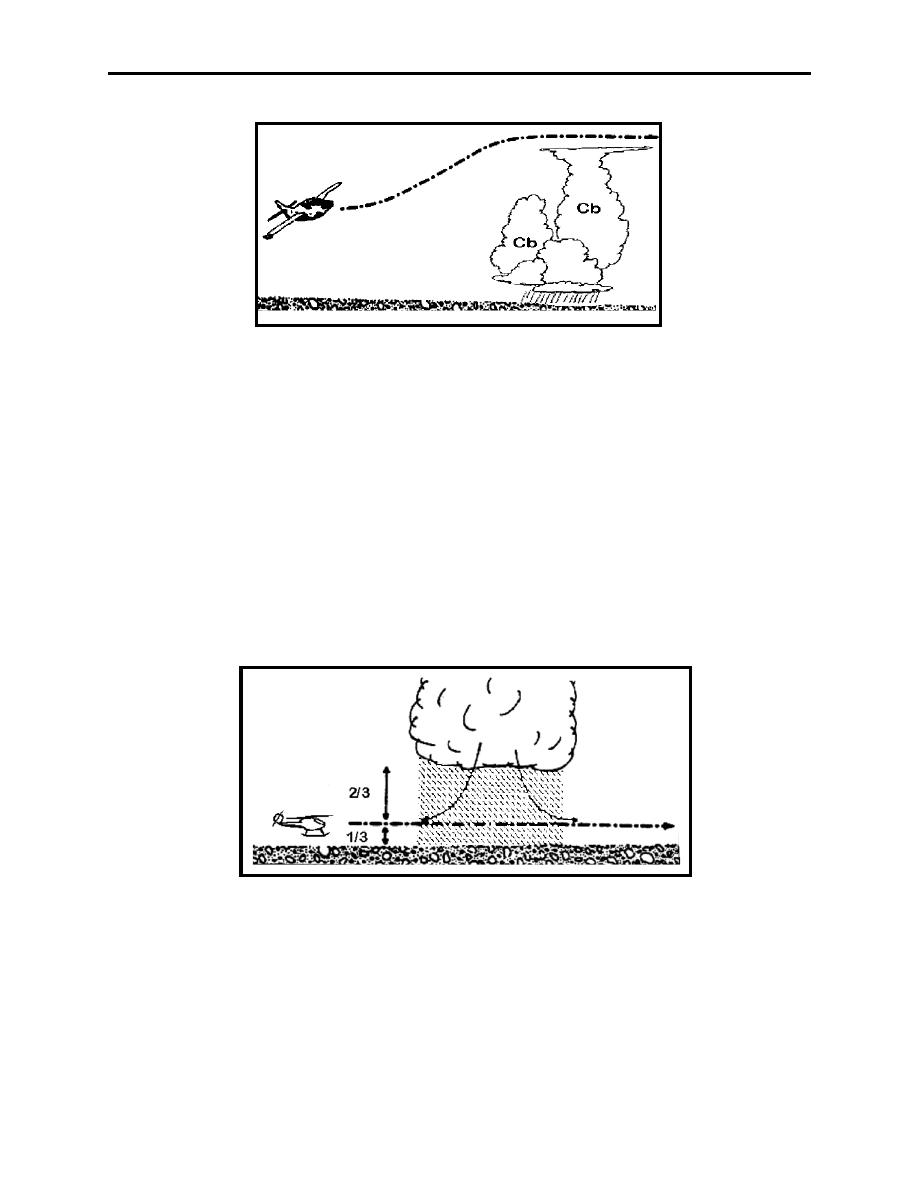 |
|||
|
|
|||
|
|
|||
| ||||||||||
|
|  CHAPTER FOUR
AVIATION WEATHER
Figure 4-11 Over the Top
Underneath
If you are unable to circumnavigate the thunderstorms in your area and the ceiling capabilities of
your aircraft will not permit an over-the-top flight, you should consider flying below the base of
the cloud. The speed of downdrafts usually decreases closer to the surface (Unless a microburst
is present!). Therefore, an altitude should be selected which will keep you as far away from the
cloud base as possible and still enable you to maintain adequate terrain clearance. Here you can
use the 1/3 rule which specifies selecting an altitude 1/3 the distance from the surface to the base
of the cloud (Figure 4-12). This procedure is not recommended for areas of mountainous terrain.
Below the storm, expect a low ceiling, poor visibility, and moderate turbulence. Perhaps the
most dangerous threat to flight below a thunderstorm is the downburst or microburst, which can
be deadly to the unsuspecting pilot.
Figure 4-12 Under the Thunderstorm
Penetration
Mission urgency or fuel state dictates whether thunderstorm penetration is required when
avoidance is not possible. The lower in the storm the penetration is made, the less the chance of
encountering hail, structural icing, or being struck by lightning. Therefore, another version of
the 1/3 rule applies: penetrate through the lower 1/3 of the storm, since most hazards are more
4-14 Thunderstorms
|
|
Privacy Statement - Press Release - Copyright Information. - Contact Us |